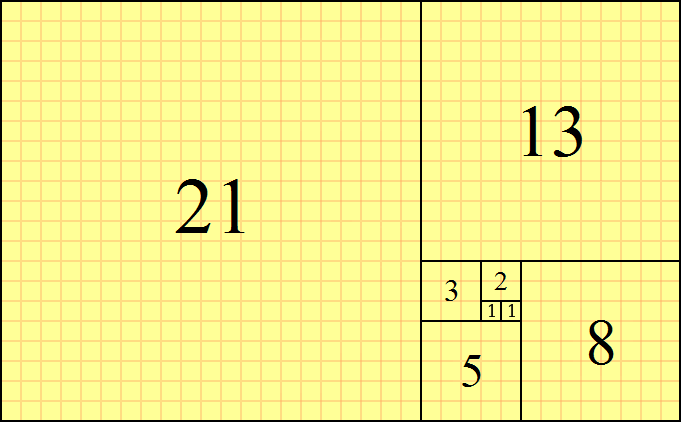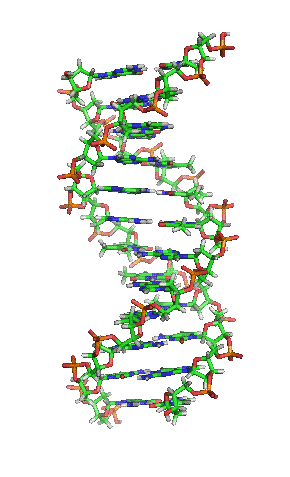--- class: left, top ## Introduction to Arrays -- #### Arrays structures, are: -- * The .green[**simplest**] data structure. -- * Placed .blue[**contiguously**] in memory. -- * Referred by the .blue[**address of the first element**]. -- * .green[**Simple**] iterations using for-loops. -- #### Arrays can be constructed on: -- * Stack Memory => **Static Arrays** -- * Heap Memory => **Dynamic Arrays** --- class: left, top ## Static Arrays -- * .red[**Fixed** in size]. -- * .red[**Size** determined at **compile-time**]. -- * .green[No memory management.] --- class: left, top ### Constructing Static Array --  -- ```c++ // Construction of array-of-integers with size 10. int array1[10]; // Construction of array-of-characters with size 150. char array2[150]; // Construction + Initialization of array-of-doubles with size 4 double physicalConstants[] = { 3.1415926 , 2.717 , 1.618 , 1.0 }; // Construction + Initialization of array-of-characters of size 6 char dna[] = { 'A' , 'A' , 'C' , 'T' , 'G' , 'C' }; ``` --- class: left, top ### Accessing Elements of Array -- `double a[10]; // Declaration` -- To access array elements, -- * First element => `a[0]`. -- * Base pointer => the address of first element => `&a[0]`. -- * Second element => `a[1]`. -- * index = offset = distance from `a[0]`. --- class: left, top #### Example: Fibionacci Sequence  --- class: left, top Let `fibionacci` an integer array holding [{Fibionacci Sequence}](https://en.wikipedia.org/wiki/Fibonacci_number). -- ```c++ int fibionacci[5]; fibionacci[0] = 1; fibionacci[1] = 1; fibionacci[2] = fibionacci[1] + fibionacci[0]; fibionacci[3] = fibionacci[2] + fibionacci[1]; fibionacci[4] = fibionacci[3] + fibionacci[2]; ``` --- class: left, top #### Example: DNA Sequence  --- class: left, top Let `dna` a sequence of some genetic region. -- ```c++ // Alternative way of Construction + Initialization of array-of-characters of size 6 char dna[] = { 'A' , 'A' , 'C' , 'T' , 'G' , 'C' }; std::cout << dna[0] << std::endl; // Prints: A dna[1] = 'T'; // Modifies the second element to 'T'. std::cout << dna[1] << std::endl; // Prints: T ``` --- class: left, top ### Iterating Over Static Array -- ```c++ for( int i = 0; i < 6 ; ++i ) { std::cout << dna[i] << ", "; } std::cout << std::endl; ``` --- class: left, top #### Application: Calculating the mean (avarage) of array elements -- Implement the following mean function (logic), to calculate the average of array elements. -- $$ \bar{x} = \frac{1}{n}\left (\sum_{i=1}^n{x_i}\right ) = \frac{x_1+x_2+\cdots +x_n}{n} $$ -- ```c++ double mean( double *array , int size ) { double sum = 0; for( int i = 0 ; i < size ; ++i ) { sum = sum + array[ i ]; } return sum / size; } int main() { double ecg_samples[] = { 9.1 , 12.9, 12.4, 15.2, 19.0, 23.3 }; // As we said, we refer to arrays by the address of first element. double ecg_mean = mean( &ecg_samples[0] , 6 ); return 0; } ``` --- class: left, top ## Dynamic Arrays -- * Lives on .blue[**Heap Memory**]. -- * .green[**Flexibility**]: **Size** determined at compilation or run-time . -- * You can construct .green[**very large**]. -- * You .red[**need to manually delete dynamic arrays**]. --- class: left, top ### Constructing Dynamic Array ```c++ // Construction of array-of-integers with arbitrary. int size = 0; std::cin >> size; // size determined at run-time. // You cannot construct static arrays with an arbitrary size like in dynamic array. int *array1 = new int[ size ]; // Construction of array-of-characters with size 150000 (around 150 Mega Bytes in memory). char dna_chromosome11 = new char[ 150000 ]; ``` --- class: left, top ### Memory Management ```c++ int *array1 = new int[ 900 ]; char *dna_chromosome11 = new char[ 150000 ]; // Do some interesting analysis on your genome. someInterestingFunction( &dna_chromosome[0] , 150000 ); // Another operations on array1 anotherInterestingFunction( &array1[0] , 900 ); // After we no longer need array1, delete [] array1; // Note the square brackets! delete [] dna_chromosome; ``` --- class: left, top ## Special Case: Array of Characters (String) ```c++ // Alternative way of Construction + Initialization of array-of-characters of size 6 char dna[] = { 'A' , 'A' , 'C' , 'T' , 'G' , 'C' , '\0'}; std::cout << dna << std::endl; // Prints: AACTGC ``` --- class: left, top ## Basic Operations on Static and Dynamic Arrays ### Copying between arrays -- Assume that you want to copy an array to another array (either static or dynamic). ```c++ #include <algorithm> // Needed for std::copy #include <iostream> // Needed for std::cout int main() { char dna1[] = { 'A' , 'A' , 'C' , 'T' , 'G' , 'C' , '\0'}; char dna2[ 7 ]; std::copy( &dna1[0] , &dna1[6] , &dna2[0] ); std::cout << dna2 << std::endl; } ``` --- class: left, top ## `std::copy` -- ```c++ std::copy( &dna1[0] , &dna1[6] , &dna2[0] ); ``` -- To copy from **source** array to **target** array: -- 1. Address of first element of **source** array. -- 2. Address of last element of **source** array. -- 3. Address of first element of **target** array. -- Equivalent to: ```c++ for( int i = 0 ; i < size1 ; ++i ) { dna2[i] = dna1[i]; } ``` --- class: left, top ## Command Line Arguments -- ### Examples: Why Command Line Arguments -- * `apt-get install vlc` * `git commit -a -m "kill me please!"` * `cp [file] [target path]` --- class: left, top ### Command Line Arguments in C and C++ -- ```c++ #include <iostream> // argc is counter for the arguments, including the application-name. // argv is array of strings representing the arguments. int main( int argc, char *argv[] ) { std::cout << "Arguments count:" << argc << std::endl; for( int i = 0 ; i < argc ; ++i ) { std::cout << "Argument:" << argv[ i ] << std::endl; } } ``` --- class: left, top #### Example: Simple calculater from command line arguments -- What if we have a simple calculator like this. -- ```terminal $ ./myCalculator 12.4 + 3.2 20 ``` --  --- class: left, top #### Convert from string form to integer form? -- ```c++ int x = "40"; // Compiler Error (Type Mismatch) int y = std::atoi("40"); // Now this works, and y = 40. double z = std::atof("13.9"); // z = 13.9 ``` -- * `std::atoi` converts string representation => integer representation. -- * `std::atof` converts a string representation => double representation. -- * `#include <cstdlib>`. --- class: left, top In our application, we can use the function implemented by *Emmanuel and Mostafa* [from here](/2018/data-structures/presentations/1_week1_recap/index.html#27). ```c++ #include <iostream> #include <cstdlib> // Our logic double calculation( double a , double b , char operation ); int main( int argc , char *argv[] ) { double a = std::atof( argv[1] ); double b = std::atof( argv[3] ); char *op_string = argv[2]; char op = op_string[0]; std::cout << calculcation( a , b , op ) << std::endl; return 0; } double calculation( double a , double b , char operation ) { // Copy-paste the implementation of Emmanuel here. } ``` --- class: left, top  --- class: left, top ## Making Your Own Header Libraries ### [{DRY}](https://en.wikipedia.org/wiki/Don%27t_repeat_yourself) #### i.e Don't repeat your self * Don't copy codes. * If you need to fix a mistake, fix it from one place. --- class: left, top <img style="width:95%" src="/gallery/multiplefiles.svg"> --- class: left, top # Thank you * Please Read the notes * <a href="/2018/data-structures/notes/3_week3a" target="_blank">{Part 1: Static Arrays and Dynamic Arrays}</a> * <a href="/2018/data-structures/notes/3_week3b" target="_blank">{Part 2: Command Line Arguments and Compilation of Multiple Files}</a> * <a href="/2018/data-structures/notes/3_faq1" target="_blank">{FAQ #1: Why `using namespace std;` is a bad practice}</a> * <a href="/2018/data-structures/notes/3_faq2" target="_blank">{FAQ #2: Why `int *p = &x` != `*p = &x`}</a> * <a href="/2018/data-structures/notes/3_faq3" target="_blank">{FAQ #3: Why not using `std::cin` inside our functions}</a>